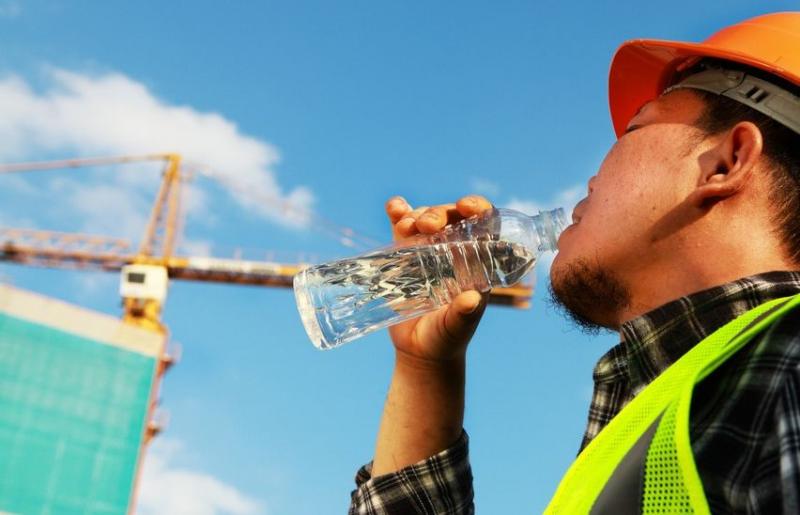
13 January 2023
Do you work outdoors? Here are our top tips to help you prepare and get through a hot day at work.
There are many benefits to working outside such as an abundance of fresh air, plenty of natural light to help generate Vitamin D and the feeling of freedom only the great outdoors can provide.
On the downside, working under the sun can be a major hazard. Outdoor work during times of extreme heat can cause serious illness, including heat exhaustion and heat stroke.
We’ve compiled seven tips to help you stay cool on the job site this summer:
1. Drink plenty of water throughout the day
Staying hydrated will help regulate your body temperature. Make sure you take plenty of drink breaks and enjoy a cold beverage to quench that hard-earned thirst.
2. Apply sunscreen frequently
The ultraviolet (UV) radiation from the harsh summer sun is extremely intense during hot weather. Sunscreen acts as a shield against these rays, adding a layer of protection against the heat that reduces the risk of sunburn and skin cancer. As an added bonus, sunscreen also helps preserve your skin and minimises premature ageing and wrinkling. Slap on that sunscreen 20 minutes before you start working outdoors and reapply every two hours to keep on top of it.
3. Wear clothes that cover the arms and legs
In hot weather we tend to wear fewer clothes. But by covering up the arms and legs, another layer of protection against the sun and its powerful heat rays is added. Loose fitting clothes are most suitable as they allow airflow between clothes and the skin to increase evaporation and permit excess heat to escape to help you keep cool.
4. Wear a hat
Hats have been used by workers as sun protection since the construction of the Egyptian pyramids around 2500BC, and for good reason. Hats protect your face, ears and neck from the sun. A wide-brimmed hat will keep your face shaded any time of the day. If your job requires you to wear a hard hat or helmet, use a brim attachment for best protection.
5. Take frequent rest breaks in the shade
This will limit your sun exposure. It’s also a great opportunity to have a rest and cool down. If you have a long day of work to get through, frequent breaks will reduce the chance of over-heating and a perfect time for a drinks break.
6. Consider adapting the work schedule around the hottest times of the day
During heatwaves, a modified workday is recommended. The hottest part of the day is generally mid-to-late afternoon in summer, so consider starting outdoor work early during the cooler part of the day and heading indoors when the mercury rises.
7. Gradually acclimatise your body to working in the heat
Acclimatisation means preparing your body to adapt to the heat. People who are acclimatised to the heat can sweat more efficiently and find it easier to maintain a normal body temperature. To acclimatise to the heat, you must gradually increase your exposure time to a hot environment over a 7 to 14-day period. New workers will need a longer time to get used to the heat than workers who have already had some exposure. Be careful to not push yourself too much, as a person’s body can only adapt to the heat to a certain limit.
Speak to your manager to find out if your employer has an acclimatisation program to help you manage the risk of heat exhaustion.
Know the warning signs of heat stress
Visit our Heat & UV page for further information on working in heat and employers responsibilities for managing the risks associated with heat stress.




